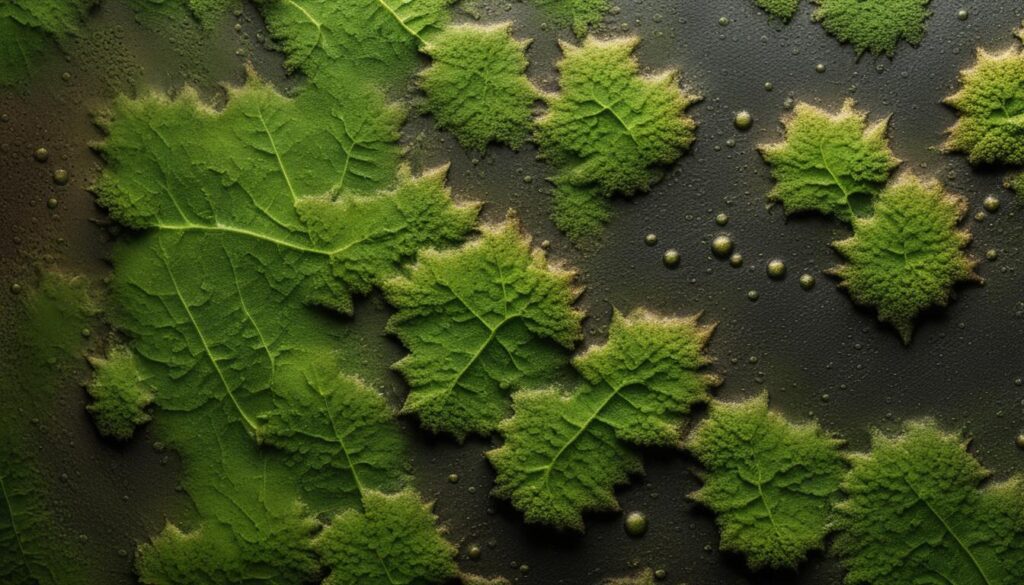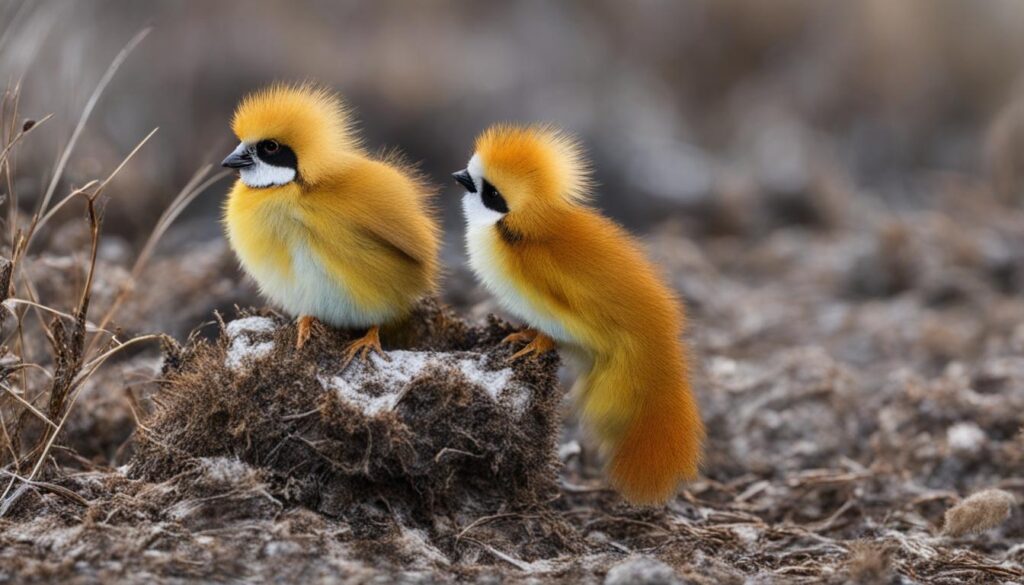
Is Mold a Fungus? Uncover the Truth Now
Welcome to our comprehensive guide on the relationship between mold and fungus. In this article, we will dive deep into the intriguing world of mold and fungi, exploring their characteristics, differences, and connections. By the end, you will have a clear understanding of whether mold is indeed a type of fungus.
When it comes to mold and fungus, many people often wonder whether they are the same thing. While they share certain similarities, it’s important to understand that mold is a specific type of fungus. To fully grasp this distinction, we need to explore their individual attributes and examine how they relate to one another.
Key Takeaways:
- Mold is a type of fungus.
- Understanding the characteristics of mold and fungi is crucial to differentiate between the two.
- Mold and fungus share some similarities, but they also exhibit distinct differences.
- Examining the biological connection between mold and other types of fungi sheds light on their classification.
- Mold and fungus have unique growth patterns, reproduction methods, and ecological roles.
Understanding Mold and Fungus
In this section, we will delve deeper into the identification of mold and fungi. It is essential to be able to distinguish between mold and fungus accurately. By understanding their unique features, you can identify and address mold-related issues effectively.
Mold and Fungus Identification
Identifying mold and fungus requires careful observation and knowledge of their distinctive characteristics. Both mold and fungi belong to the kingdom Fungi, but they have different appearances, growth patterns, and reproductive methods.
“Identifying mold and fungus is critical in assessing the potential health risks associated with their presence.”
Mold is a type of fungus that typically appears as fuzzy patches in various colors, including black, green, and white. It thrives in areas with high moisture levels, such as damp basements, bathrooms, and kitchens. Fungi, on the other hand, encompass a vast array of organisms, including mushrooms, yeasts, and molds.
To identify mold, look for signs of discoloration, musty odors, and surface texture. It is crucial to differentiate between mold and other types of fungi to take appropriate remediation measures.
Mold versus Fungus Comparison
Comparing mold and fungus can provide further insights into their differences. The following table outlines the key characteristics of mold and fungus, highlighting their unique traits:
| Characteristics | Mold | Fungus |
|---|---|---|
| Appearance | Often fuzzy, various colors | Varies (mushrooms, yeasts, molds, etc.) |
| Growth Patterns | Thrive in damp environments | Depends on the type of fungus |
| Reproductive Methods | Releases spores for reproduction | Varies (spores, fragmentation, budding, etc.) |
| Ecological Role | Decomposers, pathogens, allergens | Varies (decomposers, symbionts, parasites, etc.) |
Understanding the distinctions between mold and fungus can help you make informed decisions when dealing with fungal issues. Whether it’s taking preventive measures or addressing mold growth, this knowledge empowers you to protect your environment and health.
Mold: A Type of Fungus
When discussing mold, it is essential to understand its classification as a type of fungus. While mold and fungi may seem similar, there are distinct differences that set them apart.
Similarities:
- Both mold and fungi are microscopic organisms that thrive in warm, damp environments.
- They both play important roles in the ecosystem by aiding in the decomposition of organic matter.
- Both mold and fungi reproduce through the production and dispersal of spores.
Differences:
- Mold is a specific type of fungus that typically appears as a fuzzy or slimy growth on various surfaces, such as food, walls, or damp materials. Fungi, on the other hand, encompass a broader category of organisms that include mushrooms, yeasts, and molds.
- Mold tends to grow in colonies and can spread rapidly under favorable conditions. Fungi, in general, display diverse life cycle strategies and exhibit varying growth patterns.
- While most molds are harmless, certain species can produce allergenic or toxic substances that pose health risks to humans and animals. Fungi, as a whole, have a wide range of ecological roles and encompass both beneficial and harmful varieties.
“Understanding the distinction between mold and fungi is crucial in addressing mold-related issues effectively and implementing appropriate mitigation measures.” – Dr. Rachel Johnson, Fungal Biologist
By recognizing mold as a type of fungus, we can better comprehend its behaviors, growth patterns, and potential impacts. This knowledge empowers us to take proactive steps in preventing and remedying mold infestations, ensuring a healthier and safer living environment.
To illustrate the differences, here is a visually engaging comparison table:
| Mold | Fungus |
|---|---|
| Specific type of fungus | Broader category of organisms |
| Appears as fuzzy or slimy growth | Includes mushrooms, yeasts, and molds |
| Tends to grow in colonies | Exhibits diverse life cycle strategies |
| Can produce harmful substances | Encompasses beneficial and harmful varieties |

The Biological Connection
When examining the relationship between mold and fungi, it becomes clear that there is a strong biological connection between the two. Mold is indeed a type of fungus, and this shared classification is based on several similarities between mold and other types of fungi.
One key similarity is their reproductive methods. Mold, like other fungi, reproduces through the release of spores into the environment. These spores can travel through the air and settle on suitable surfaces, where they can then germinate and form new colonies.
Another similarity lies in their cellular structure. Both mold and fungi are composed of multicellular structures called hyphae, which intertwine to form a network known as mycelium. This mycelium allows mold and fungi to absorb nutrients from their surroundings and grow and spread under favorable conditions.
Furthermore, mold and other types of fungi share similarities in their ecological roles. They play vital roles in the decomposition of organic matter, breaking down dead plant and animal material to recycle nutrients back into the ecosystem. Additionally, some fungi form symbiotic relationships with plants, aiding in nutrient absorption and providing protection against pests and diseases.
This biological connection between mold and fungi highlights the overlapping characteristics and functions that support their classification as part of the same biological group. Understanding this relationship is essential for comprehending the nature of mold and its impact on our environment and health.
Characteristics of Mold
As we explore the fascinating world of mold, it is crucial to understand the specific characteristics that differentiate mold from other types of fungi. Let’s delve into its growth patterns, reproduction methods, and unique features.
Growth Patterns
Mold thrives in environments with abundant moisture and organic material. It spreads through microscopic spores that travel through the air and settle in damp areas. Once these spores find a suitable environment, such as a humid room or a water-damaged surface, they begin to grow and form colonies.
Reproduction Methods
Mold reproduces through a process called sporulation. During this process, mold releases countless spores into the air, allowing them to disperse and find new areas to colonize. These spores can survive harsh conditions and remain dormant until they encounter the ideal conditions for growth.
Unique Features
One of the key features that differentiates mold from other fungi is its ability to produce mycotoxins. Mycotoxins are toxic substances that can cause adverse health effects in humans and animals when ingested or inhaled. Additionally, mold can have various colors and textures, ranging from black, green, or white fuzzy patches to slimy or powdery surfaces.
“Mold is a persistent microorganism that can cause significant damage and pose health risks. Understanding its distinctive characteristics is essential for effective mold prevention and remediation.”
Now that we have explored the characteristics of mold, we can gain a better understanding of its nature and how it differs from other types of fungi. In the next section, we will delve into the general characteristics of fungi and further expand our knowledge on this diverse biological kingdom.
Characteristics of Fungi
In this section, we will explore the general characteristics of fungi, shedding light on their unique attributes that set them apart as a distinct group in the biological world.
Reproductive Strategies
Fungi display diverse reproductive strategies, allowing them to adapt and thrive in various environments. They reproduce through spores, which are small, lightweight reproductive units capable of dispersing over long distances. These spores can be produced either sexually or asexually, depending on the species. Sexual reproduction involves the fusion of two different mating types, while asexual reproduction occurs through the production and release of genetically identical spores.
Cellular Structure
The cellular structure of fungi distinguishes them from other organisms. Unlike plants and animals, fungi possess a cell wall made primarily of chitin, a tough and flexible carbohydrate. This cell wall provides structural support and protection for the fungal cells. Additionally, fungi are composed of multinucleated hyphae, which are thread-like structures that form the main body of the fungus. These hyphae extend and interconnect, forming a network called mycelium.
Diversity and Ecological Roles
Fungi are an incredibly diverse group of organisms, with estimated species numbering in the millions. They inhabit a wide range of habitats, including soil, water, and even inside living organisms. Fungi play vital roles in ecosystems, acting as decomposers, symbionts, and pathogens. They break down organic matter, releasing essential nutrients back into the environment. Fungi also form mutually beneficial partnerships with plants, enhancing nutrient absorption and disease resistance. However, some fungal species can cause infections and diseases in humans and other animals.
To summarize, fungi possess unique reproductive strategies, cellular structures, and ecological roles that distinguish them as a distinct group in the biological world. Understanding these characteristics is essential in differentiating between mold and other types of fungi.

“Fungi are incredible organisms that contribute greatly to the balance and diversity of our ecosystems.” – Dr. Amanda Johnson
Mold and Fungus: A Comparison
Understanding the similarities and differences between mold and fungi is essential for accurate identification and effective management. Let’s explore the various aspects that define their relationship and shed light on their distinct characteristics.
1. Appearance
Mold and fungi share certain visual similarities, making it challenging to differentiate between them at first glance. Both exhibit filamentous structures and often appear as a fuzzy or powdery growth on various surfaces. However, mold tends to have a more irregular and patchy appearance compared to the more uniform structure of fungi.
2. Behavior
The behavior of mold and fungi differs in terms of growth patterns. Mold typically grows rapidly and spreads across surfaces, thriving in environments with high moisture levels and organic matter. On the other hand, fungi often exhibit slower growth and are more commonly associated with specific habitats like soil, plants, or decomposing organic material.
3. Ecological Roles
Mold and fungi play different ecological roles in the natural environment. Mold serves as an essential decomposer, breaking down organic matter and aiding in nutrient recycling. In contrast, fungi fulfill various ecological functions, including symbiotic relationships with plants, pathogenic interactions, and the formation of mycorrhizal associations to facilitate nutrient absorption.
| Mold | Fungi | |
|---|---|---|
| Appearance | Irregular, patchy | Uniform |
| Behavior | Rapid growth, spreads easily | Slower growth, specific habitat association |
| Ecological Roles | Decomposer, nutrient recycling | Symbiotic relationships, pathogenic interactions, mycorrhizal associations |
Conclusion
In conclusion, our exploration of mold and fungi has provided a clear understanding of their relationship and the question of whether mold is a fungus. Through our analysis of their characteristics, we have established that mold is indeed a type of fungus.
Understanding the nature of mold and its connection to fungi is crucial in addressing mold-related issues effectively. Mold, as a type of fungus, shares similarities with other fungi in terms of growth patterns, reproductive methods, and ecological roles.
By recognizing mold as a fungus, homeowners, property managers, and individuals concerned about indoor air quality can take appropriate measures to prevent mold growth, mitigate its adverse effects, and create a healthier living environment.




